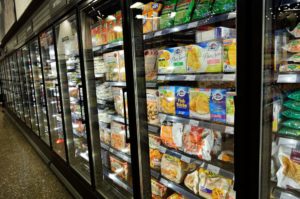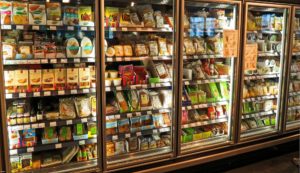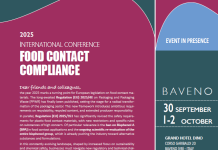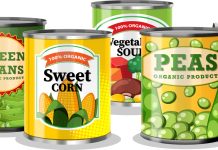 Mild technologies, targeted packaging, innovative methods of transport and conservation assist conventional stabilisation technologies to keep the organoleptic qualities of perishable products as long as possible and extend their commercial life.
Mild technologies, targeted packaging, innovative methods of transport and conservation assist conventional stabilisation technologies to keep the organoleptic qualities of perishable products as long as possible and extend their commercial life.
The needs of far-away markets, new consumption habits, marketing systems required food products with a longer shelf-life. At the same time, manufacturers are interested in stabilizing the organoleptic quality of their food products as long as possible. This involves both, stabilization technologies and production chain, from the careful selection of raw materials to the processing steps, from packaging to transportation and storage.
Exploit the factors that affect the durability
Food shelf-life of food must reckon with the presence of oxygen: the main cause of oxidative phenomena, which adversely affect the organoleptic and hygienic properties of food, favouring the development of aerobic micro-organisms, as moulds. Packaging solutions meet such needs by proposing different solutions, ranging from vacuum systems with skin technology and modified atmosphere packaging to active and intelligent packaging. In skin packs, the film sticks to the product by means of a vacuum process, and is then sealed onto a base (as for instance a cardboard tray), so that the package is perfectly sealed, thus improving both the presentation on the shelf and the shelf-life of the product. The classic modified atmosphere packaging where the air inside the package is replaced with a mixture of inert gas – generally nitrogen and carbon dioxide – can be combined with absorbers of residual oxygen. There are films for modified atmosphere packaging that can remove the residual oxygen present in the head space of a pack. The scavenging resin is near to the sealing layer, and it remains inactive until its activation by UV-light in the packaging machine.
It is possible to integrate in the barrier layer a O2 scavenger that captures the oxygen coming from outside the package. Active packages can release inside the package substances that fight the effects of oxygen, such as antioxidants, some preservatives, carbon dioxide, or, alternatively, scavenge undesirable substances, such as oxygen, as well as ethylene, excess moisture or odours accumulated in the head space. Masterbatches with odour absorbers incorporated in the sealing layer or in the next material layer are available on the market. These solutions do not cover the odour associated with putrefaction of the packaged food. To increase the shelf-life it is of utmost importance to reduce microbial activity to a minimum. One solution proposes the direct contact of the antimicrobial agent – such as silver ions, essential oils, protective cultures, natural antimicrobial substances – with food, by spraying the surface of food or inside the package prior to its sealing. As alternative, the antimicrobial can be applied onto the inner package layer. Active packages are now a reality in the food sector. Companies are working to find sustainable solutions for industrial use, identify new food-grade substances, obtain the approval of appropriate bodies before marketing. The commercial availability of antimicrobial packaging solutions, in particular, greatly depends on the rules in force in the various countries.
Intelligent packs inform the consumer and other players on the conservation state of packaged food on their safety, deterioration or damaged quality. The development of certain micro-organisms can reduce the product shelf-life, acting on its wholesomeness and causing the deterioration of its organoleptic properties. Bacterial or fungal cultures are inoculated in some foods: by entering into competition with pathogenic and/or altering micro-organisms, they prevent their development, also thanks to the liberation of inhibiting substances, as bacteriocins and organic acids (lactic and acetic acid). The bacteriocins are proteic substances, produced by different microbial species, and have an inhibiting effect on other micro-organisms. The interest in the substances used for extending the shelf-life of food derives also from the fact that they are obtained from bacterial strains already widely used in the food industry, as lactic acid bacteria. Presently, the sole bacteriocin allowed by the European Union as a food additive is nisin from Lactococcus lactis. Due to customers’ desire for more natural products, numerous studies have been carried out to replace artificial additives with natural substances. Examples thereof are, for instance, some antioxidants added to breakfast cereals, preservatives obtained from organic vegetable wastes to extend the durability of fruit and vegetables, slowing down the decomposition process. By spraying the preserving substance directly on fruit and vegetables would act as barrier against the gas that causes the degradation process. For the sake of improved durability of perishable products, there are even technological solutions designed for automated real-time monitoring of the food chain, by means of devices that record and monitor the temperature in the storage areas and in vehicles. Some systems provide real-time data regarding the cold chain and the position of the load, thanks to the continuous transfer of data and alarm signals. Proposals to increase the shelf-life of fruits and vegetables involve ozone air purifiers.
Ozone reduces the impact of fungi, bacteria, moulds and yeasts, without residues, and is used for hygienic cleaning and disinfection of processing areas and refrigeration cells. Ozone can be also used in irrigation systems, to eliminate a variety of micro-organisms. Ozonization systems and passive refrigeration, both used in cold storage and transportation of fruits, vegetables and meats as well as fish and dairy products, are interesting alternatives to traditional chemical treatments. Acting as an oxidizer, ozone can reduce volatile substances, while passive refrigeration preserves the food at temperatures close to zero, without the need for ventilation and thus preserving the products from the risk of dehydration and the release of contaminating substances and moulds. Furthermore, it works with higher humidity compared to traditional refrigeration systems, avoiding the dehumidification of the air and the resulting dehydration and weight loss of the products.
 Numerous researches deal with the extension of the shelf–life of 4th range fruits and vegetables by means of germicidal disinfection using continuous and pulsed ultraviolet light (UV), without chemical agents. This method uses UVC light wavebands, which modify the DNA or RNA of micro-organisms and inhibit their reproduction. The results are encouraging. Some studies show that UVC light can extend by50% the shelf–life of fresh and packaged apples. The technologies for the aseptic packaging of milk, fruit juices and other products using multi-layer packaging materials are an established reality, but companies are working to improve them further. Solutions are being studied to reduce the use of hydrogen peroxide, because this accelerates the components degradation of machine components, or faster paper sterilization systems, in order to accelerate machines productivity. Ionizing radiations may replace the hydrogen peroxide bath. The image analysis using different techniques (scanner, camera, video) of this system is proving useful in the study and in the determination of the durability of food; the same applies to the corresponding processing with software, in order to obtain parameters about the appearance of the product in relation to time.
Numerous researches deal with the extension of the shelf–life of 4th range fruits and vegetables by means of germicidal disinfection using continuous and pulsed ultraviolet light (UV), without chemical agents. This method uses UVC light wavebands, which modify the DNA or RNA of micro-organisms and inhibit their reproduction. The results are encouraging. Some studies show that UVC light can extend by50% the shelf–life of fresh and packaged apples. The technologies for the aseptic packaging of milk, fruit juices and other products using multi-layer packaging materials are an established reality, but companies are working to improve them further. Solutions are being studied to reduce the use of hydrogen peroxide, because this accelerates the components degradation of machine components, or faster paper sterilization systems, in order to accelerate machines productivity. Ionizing radiations may replace the hydrogen peroxide bath. The image analysis using different techniques (scanner, camera, video) of this system is proving useful in the study and in the determination of the durability of food; the same applies to the corresponding processing with software, in order to obtain parameters about the appearance of the product in relation to time.
Mild technologies. High isostatic pressure, membrane filtration, pulsed electric fields, radiofrequency, microwaves, ohmic heating, cold plasma, electrolyzed water: These technologies are defined as mild technologies, because they increase the shelf-life of food products, while considerably reducing the damages caused by conventional treatments to the nutritional properties. Ohmic heating is a thermal treatment, which allows pasteurization and sterilization, but with a higher heating rate compared to traditional treatments. It can be used to treat products in pieces, such as vegetable soups, fruit salads, fruit juices, and also eggs. It is not suitable for products with a low conductivity, such as oils and fats. Radiofrequency systems are used mainly for the leavening of several bakery products or to decrease their moisture level. They are also used to pasteurize jams. The high hydrostatic pressures (HHP – High Hydrostatic Pressure) allow the inactivation of micro-organisms, thanks to cell lysis. By applying the same pressure (100-1000 MPa) on the whole product, even the most delicate ones remain intact. In addition the treatment is practically athermic, and therefore does not affect the organoleptic and nutritional properties of food, such as fruit juices, ready meals, sauces. This technology is also applied for the stabilization of some fish products, such as soaked salt codfish, obtaining an extended shelf-life up to 40 days against the normal 4-3, or for the shelling of crustaceans. In addition to the reduced heat damage, the product processed at high pressures exhibits a smaller weight loss than that treated with steam. High hydrostatic pressures were tested with success also for the inactivation of the Anisakis in fish products and of Listeria monocytogenes in cold meats.
Against wastage. The control – not only the extension – of the shelf-life can be used to combat a growing problem in our society: the issue of food waste. Recently distributors have begun to encourage consumers to buy food closer to the expiry date, selling these products at attractive prices. Digital printing, for example, allows to differentiate every product package from the other packages, making all of them automatically traceable. So, it is possible to know in real time the expiry date of all food products present in a supermarket or hypermarket, so that the distributor can automatically encourage the sale of products that are approaching their expiry date.



